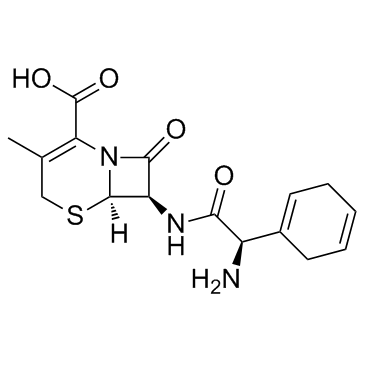| Structure | Name/CAS No. | Articles |
|---|---|---|
 |
Cefradine
CAS:38821-53-3 |
|
 |
Cephradine hydrate
CAS:31828-50-9 |